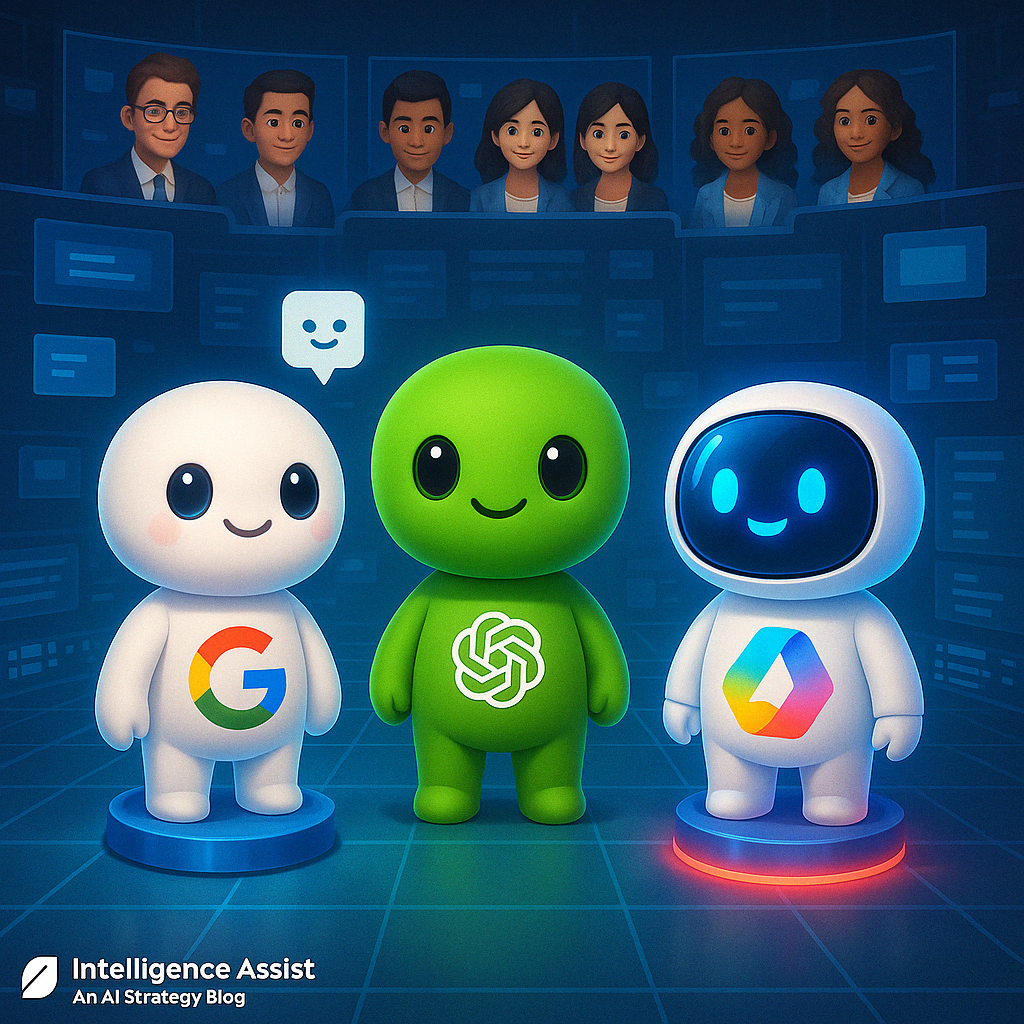At Intelligence Assist, we’ve always stood firmly in the corner of small businesses in an industry that seems perpetually focused on enterprise-scale solutions. Many of the AI events we attend feel designed for the corporate giants, which can’t help but make you feel like a kid at the adults’ table. Yet as we’ve watched these enterprise-focused discussions unfold, an ironic truth has become clear: the traditional advantages of large-scale operations might actually be working against organisations in the AI adoption race. This counterintuitive dynamic is creating an unprecedented opportunity for small and medium-sized enterprises (SMEs) to gain competitive ground.
For many businesses watching the AI revolution unfold, there’s an overwhelming sense of already being behind the curve. Even those of us working within the AI industry sometimes feel we’re struggling to keep pace with developments that seem to accelerate daily. What was cutting-edge knowledge just months ago can feel outdated almost overnight, and yesterday’s breakthrough is today’s baseline.
Yet a refreshing truth emerges as we dangle our legs from that oversized chair at the adults’ table: we’re still in the early chapters of this story. The fundamentals of AI adoption aren’t racing ahead of us – they’re unfolding in real-time, creating a unique window of opportunity for organisations of all sizes to shape their AI future.

The Enterprise Challenge
Large organisations are finding themselves in a peculiar position. While they have the resources and apparent capability to implement AI solutions at scale, they’re increasingly hampered by the very frameworks that have historically ensured their operational excellence. The challenge isn’t in the AI technology itself, but in the supporting infrastructure required for enterprise-wide implementation.
Quality assurance systems, testing frameworks, and risk management protocols – essential elements for enterprise-scale operations – haven’t evolved at the same exponential pace as AI capabilities. This gap is creating significant friction points in adoption, effectively slowing down larger organisations’ ability to integrate AI solutions meaningfully across their operations.
The SME Advantage
In contrast, smaller businesses are discovering that their size offers unexpected benefits in the AI adoption landscape. With more manageable operational scales, SMEs can implement AI solutions with greater agility, maintain closer oversight, and adapt more quickly to both successes and failures. This environment of controlled experimentation and rapid iteration is proving ideal for AI integration.
This reality is particularly encouraging for small businesses who might feel they’ve missed their chance to compete in the AI space. The truth is quite the opposite – we’re still in the early stages of practical AI implementation, where agility and adaptability often matter more than sheer resource capacity. While larger organisations navigate complex approval chains and legacy systems, smaller businesses can move with the kind of speed and precision that emerging AI capabilities demand.
A Window of Opportunity
This creates a unique moment in time where smaller businesses can potentially leapfrog larger competitors in AI adoption and innovation. While enterprises are working to develop comprehensive testing mechanisms and quality assurance frameworks for scalable AI implementation, SMEs can move forward with controlled, practical applications of AI technology.
Looking ahead, this window won’t remain open indefinitely. Eventually, the supporting infrastructure for enterprise-scale AI implementation will catch up with the technology’s capabilities. However, the SMEs that seize this moment to establish themselves as AI-forward organisations may find themselves in surprisingly competitive positions against larger industry players.
Seizing the Moment
The key takeaway? In the race to integrate AI effectively, bigger isn’t necessarily better. The ability to move quickly, accept reasonable levels of uncertainty, and maintain effective human oversight might prove more valuable than sheer organisational scale. For SMEs, this represents an unprecedented opportunity to establish new competitive advantages and potentially reshape industry dynamics.
For small business leaders who worry they’ve fallen behind, this insight should be empowering: you haven’t missed the boat – you’re arriving at exactly the right moment. The current AI landscape rewards those who can move thoughtfully but decisively, experiment intelligently, and maintain close alignment between AI capabilities and business objectives. So, what does this mean… in a period where agility trumps size, small businesses aren’t just participants in the AI revolution – they’re perfectly positioned to lead








